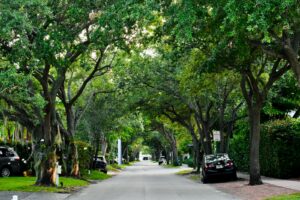Residential greenery can mitigate childhood cancer risk
Based on the premise that plants are considered to be relatively effective at removing particulate matter from the air, research in America has studied the connections between childhood cancer, air pollution and local ‘greenness’.
The new study, led by the University of Minnesota’s Masonic Cancer Center and the University of Michigan Medical School has been published in the Journal of the National Cancer Institute, suggesting that exposure to air pollution and vegetation may impact childhood cancer development. 
The population-based study examined over 6,000 children with cancer and 109,000 children without cancer in Texas and found that from 1995-2011 increased exposure to PM2.5 during the year of birth increased the risk of developing childhood cancer, particularly lymphoid leukemia, lymphoma, ependymoma, retinoblastoma and thyroid carcinoma.
Given that plants are thought to remove up to 20% of PM2.5 from the air, the team looked for any association between the levels of greenery in the areas where the children lived and their risk of cancer.
Their findings suggest that increased levels of residential greenness reduced the risk of the two most commonly diagnosed malignant brain tumors in children: ependymoma and medulloblastoma.
Dr. Lindsay Williams who led the study said: ‘As a childhood cancer epidemiologist, I am always concerned with identifying factors that increase risk of cancer development in kids. There is growing evidence that air pollution during pregnancy and fetal development increases the risk of developing some diseases in children, including cancer.’
Earlier research by Arnt Diener, advisor to the World Health Organization and environmental epidemiologist at Heinrich-Heine University had identified three underlying mechanisms that explain how green space can reduce air pollution exposure:
- Deposition: Experiments have shown that living plants can facilitate the deposition of a much higher quantity of pollutants than similarly shaped artificial structures.
- Dispersion: Strategically placed plants can lower local pollutant concentrations by acting as a shield.
- Modification: Several gaseous and particulate pollutants in the air are transformed by plants, either on their surface or within their structures. Plants can also improve or worsen pre-conditions for air pollution formation, such as air temperature or humidity.
Diener said: ‘The interactions between green spaces and air quality are fascinating and increasingly understood. Green space can effectively change the quality and composition of the air that city dwellers inhale.’

















